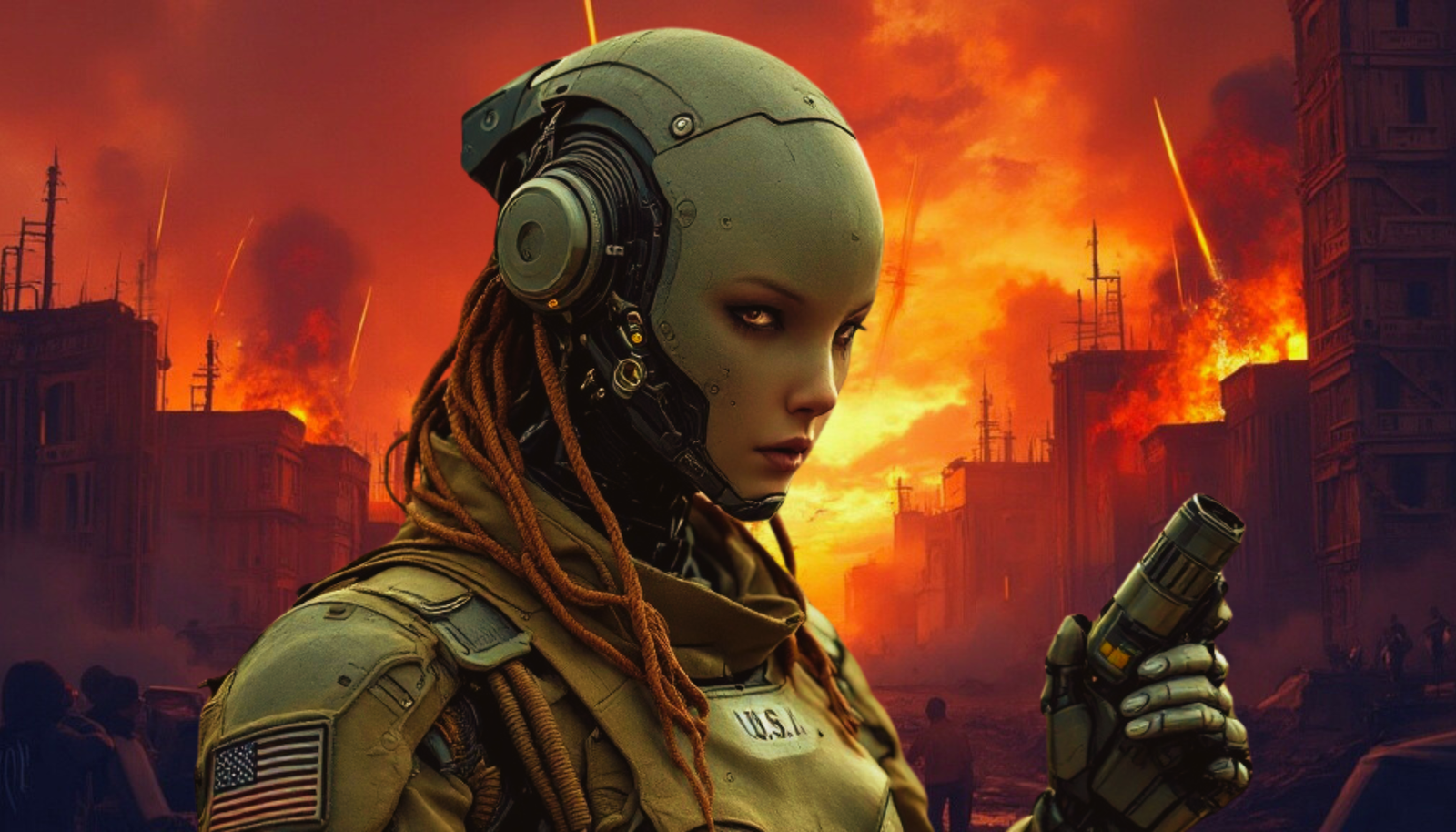It’s like something out of a Sci-Fi movie that sends the 90s kid in me into a trance-like vision of Terminator robots hunting me like I am John Connor. The official launch of the Pentagon’s New AI Office is meant to drive military innovation. Its official name is the Artificial Intelligence Rapid Capabilities Cell (AI RCC), but it might as well be called SkyNet. It’s incredible that AI has gone from making hilariously bad videos of Will Smith eating noodles to infiltrating our defense operations in record time. Still, now I am left with some lingering concerns.
Is this a slam dunk for the future of defense strategies or a high-tech arms race with our world superpower competitors with consequences as unpredictable as the atomic bomb was to pre-WWII civilizations? I guess we’re not too far away from finding out.
The Pentagon’s Power Play with AI.
We know the Department of Defense has invested in artificial intelligence for a few years, but the recent opening of the AI RCC represents an urgent escalation. Make no mistake. This isn’t just another government-funded research lab; it’s a direct path to AI development that will impact nearly every aspect of U.S. military operations, possibly very shortly.
Officials say it will focus on autonomous systems, advanced surveillance, logistics, and battlefield decision-making. The goal is to make military forces faster, more intelligent, and more lethal. Still no confirmation yet as to whether or not it will base decisions on whether your country has recently discovered oil fields or no Rothschild-controlled central banking system.
But why now? If the investments and observations have been pouring in for the last few years, what has changed that is pushing the Pentagon to accelerate AI adoption?
The Global AI Arms Race
As it turns out, AI-driven warfare is not just an American obsession. Rival nations like China and Russia have been making strides in military AI, but it hasn’t all been drones and augmented visual displays. China, in particular, has made leaps and bounds in implementing AI and human-like robotics. In addition to that, data, automation, and real-time intelligence can determine a military campaign’s success or failure, and the Pentagon certainly doesn’t want to be left behind. Officials warn that not acting now could strategically put the U.S. at a significant disadvantage.
This new AI office is part of a more significant effort to ensure that the U.S. stays ahead in what some experts call the “AI arms race,” a term that doesn’t ease my qualms about the situation anymore. With AI-assisted weapons systems, real-time intelligence on the battlefield, and cyber defenses powered by machine learning, the goal is clear: win wars before they even begin. On the other hand, I have to wonder if they can wage wars before they even start.
What happens when an AI algorithm, acting on gathered data and intelligence, determines the best plan of action is a Bush-era style “preemptive” shock and awe campaign and that waiting for approval from the Pentagon or Commander in Chief could cost American casualties and takes action into its own hands? The thought of it shorts my circuits, let me tell you.
What AI-Powered Warfare Looks Like
Military AI was hypothetical just 3 years ago, but today, it is already being implemented into real-world applications. Here are some of the key areas in which AI is poised to make an impact:
Surveillance and Intelligence: AI can process vast amounts of data, from satellite imagery to intercepted communications, identifying threats faster than human analysts. Someone tell Shia LeBouf to get ready because the Eagle’s Eye has landed.
Autonomous Drones and Unmanned Vehicles: AI-enabled drones are already being tested for reconnaissance, target identification, and even combat missions. Some very unhappy U.S. Air Force Tactical Systems Operators may be retiring their Xbox controller.
Cyber Warfare and Digital Defense: AI is being integrated into cybersecurity efforts, helping to detect and neutralize threats in real-time. I’m sure there are many anonymous blackhats out there still willing to take a hack at anything, but AI is going to offer them some challenging obstacles.
Predictive Maintenance: AI-driven maintenance predictions could keep military aircraft, ships, and ground vehicles in better condition. Imagine if Cortana and ChatGPT played a game of Battleship together. Who would you place your bets on?
AI-Assisted Command and Control: AI systems will process battlefield information and provide commanders with faster and more accurate tactical details. Hey Siri, tell me where Bin Laden is hiding…also set a reminder for my dentist appointment on Tuesday.
The Pentagon has already allocated $100 million to fund AI development over the next two years, and four horsemen…er…I mean, “Frontier AI” pilot programs are already underway. These projects seek to test how generative AI can improve everything from military strategy to logistics management.
The Ethics of AI in Combat.
In a move that won’t backfire, the military is putting AI in charge of stuff that explodes. The biggest fear? That the AI will end up making life-and-death decisions without human oversight. While the Pentagon insists that humans will remain in command, skeptics warn that AI-powered autonomous weapons could lead to unintended consequences, including miscalculations, civilian casualties, and even out-of-control AI behavior. Sound far-fetched? Tell that to the self-driving cars that have already mistaken sidewalks for highways and crosswalks for target practice.
International bodies and human rights organizations are calling for stricter regulations to prevent AI from being weaponized in ways that could spiral out of control. But with the Pentagon moving full speed ahead, what could possibly go wrong?
The Uncertain Future of AI Warfare
With rapid AI and machine learning advances, the Pentagon’s new AI office is poised to play a key role in shaping the next generation of warfighting. However, the key questions remain unanswered:
How soon will the new office be deployed in actual conflicts?
Will AI give the U.S. a strategic edge, or will it introduce new vulnerabilities for which we aren’t prepared?
One thing’s certain, this is just the beginning. AI is no longer just a tool for tech companies and research labs. It’s quickly becoming the backbone of modern warfare. The consequences of this shift could redefine global security in ways we are only beginning to understand.
What do you think? Should AI play a role in military decision-making, or are we opening Pandora’s box?
















